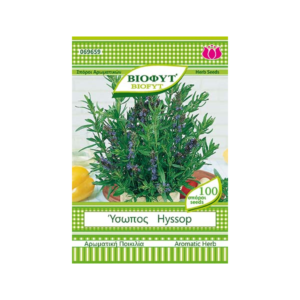Anise
Anise
This small taxon is represented by evergreen trees and shrubs distributed in North America, Mexico, Peru, the West Indies and eastern Asia, with the highest concentration of species occurring in northern Myanmar and southern China.
The best known member of this genus is probably Illicium verum. Other species of this genus are Illicium anistatum, Illicium parviflorum, Illicium angustisepalum A.C. and other.
Star anise is widely cultivated in the tropical and subtropical regions of Asia.
China and Vietnam are the main producers of star anise. Now, it is also grown in France, Spain, Italy and the Philippines.
China is the world’s largest producer of star anise, where cultivation as a medicinal plant in Guangxi province accounts for about 90% of total production.
More Products
Thyme
ThymeThyme is an aromatic low shrub, a typical plant found in the countryside of our country. Thyme has a creeping but also upright growth and reaches a height of up to 40 cm. There are many varieties of thyme that we can grow. A special and hardy variety of thyme is lemon thyme, the leaves of which have a strong lemon aroma.
Celery aromatic
Celery aromaticCelery varieties, depending on the part of the plant for which they are grown, are divided into two main categories: a) leafy ones that have rich foliage vegetation and b) rhizomes that have less growth of the above-ground part of the plant and more root growth. The best-known varieties are the traditional variety of celery, the variety of celery and the variety of celeriac, which have the following characteristics: Common variety of celery: Traditional local leafy variety of celery with thin stems and leaves that have a strong aroma and taste Celery variety: Classic leafy variety of celery with thick crisp stems that reach a height of up to one meter and large leaves but not as strongly scented as the common variety. Celery root variety: Characteristic variety of root celery eaten for its large round root, fresh or cooked in salads and soups.
Chicory
ChicoryWhat are the most popular radish varieties to grow? There are many species and varieties of radish to choose from and grow. First, the wild radish with its bitter taste and characteristic green jagged leaves that turn red at the base. Stamnagathi is also a variety of wild radish. And then there is the tame radish with the upright, wider leaves, lighter at the base and with less bitterness. Also, the Italian radish with its upright toothed leaves, spicy bitter taste and many harvests. Let’s not forget radicchio, the radish variety with crimson leaves and white nerves that close like lettuce leaves. Radizio has a strong spiciness when eaten raw that fades with cooking. Radish is a horticultural plant that loves the cold environment and that is why it is planted in the autumn season when we have low temperatures, humidity and few hours of daily sunshine. After all, at high temperatures, the radish blooms prematurely and is unsuitable for consumption. We plant radishes in sunny or semi-shady places and we prefer rich, fertile and cool soils that ensure good drainage. If we plant in the ground, we incorporate organic matter in the form of compost and digested manure for better root development. To plant it in a pot, we use potting soil special for horticulture, rich in organic matter and nutrients, and place the pot on a balcony with western or eastern exposure for the radish culture to thrive.
Cabbage Chinese
Cabbage ChineseCabbage is a cold season plant and the ideal temperature for its growth is 15-18 degrees Celsius. Cabbages are planted mainly in sunny positions in the fall, although semi-shaded positions are useful in early summer plantings when it is very hot. Cabbage can grow in all types of soil, except very acidic soils. It is important that the soil has good drainage to remove excess water from watering and to ensure good aeration of the roots. For early cabbages we prefer sandy, light warm soils, while for late cabbages we prefer heavier and more fertile soils with good drainage, rich in organic matter. 3. How do we plant the cabbages and at what distances? We can raise cabbage plants from seed to maintain traditional varieties or keep our own seeds from the plants every year. Planting in a nursery takes 4-6 weeks until the young plants are ready for transplanting in the field. Ideal temperatures for seed germination and plant growth are 15-20 degrees Celsius. Alternatively, we can get ready-made cabbage plants from agricultural stores and nurseries in our area. Cabbage is transplanted from mid-August to early November depending on the growing conditions in each region.
Cucumber mini
Cucumber miniThere are dozens of cucumber varieties and hybrids that are commercially available and that we can plant. Depending on the size of the fruit, the cucumber varieties are divided into the large-fruited varieties and the small-fruited varieties that, in addition to being fresh, are also used for pickling. A traditional long-fruited variety of cucumber is the Kalybiotiko cucumber, suitable for summer outdoor cultivation that gives very tasty smooth dark green fruits, about 40 cm long. Among the small-fruited varieties, we distinguish the Knossos variety, from the Heraklion region of Crete, with a smooth, dark green, crunchy fruit about 20 centimeters long. Long cucumber, a traditional variety of cucumber.
Hyssop
HyssopHyssop is a low shrub that reaches 60 cm in height. Its leaves are lanceolate without a stem and its flowers are dark blue with purple stamens. It has a strong clean and sweet smell with touches of honey aroma. The top note of its essential oil is camphorous and in its middle notes, a warm spice scent lingers as an impression. The color of the essential oil is yellow-green.









